Spotlight (188 found)
Villagers in Eastern Shan State Suffer Forced Labour and Extortion by Burma Army Troops Guarding Loggers in Salween Dam Flood Zone
Villagers in Murng Paeng township are being used as forced labour by Burmese government troops giving security to military-linked logging operations above the planned Ta Sang dam on the Salween River. The loggers are clearing out teak forests from the projected flood zone for export to neighbouring countries […]
• • •Right to Counsel: The Independence of Lawyers in Myanmar
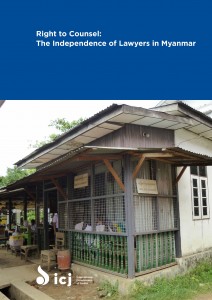 Lawyers continue to encounter impediments to the exercise of their professional functions and freedom of association, as well as pervasive corruption, although they have been able to act with greater independence, says the ICJ in a new report launched today.
Lawyers continue to encounter impediments to the exercise of their professional functions and freedom of association, as well as pervasive corruption, although they have been able to act with greater independence, says the ICJ in a new report launched today.
Right to Counsel: The Independence of Lawyers in Myanmar – based on interviews with 60 lawyers in practice in the country – says authorities have significantly decreased their obstruction of, and interference in, legal processes since the country began political reforms in 2011 […]
Children for Hire: A Portrait of Child Labor in Mon Areas
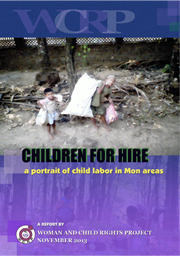 The growing domestic and international attention being paid to child labor in Burma, also known as Myanmar, signals a vital step in the country’s reform and development process. The advent of new funding to research the scope of the problem, proposed amendments to labor laws, and popularized documentaries exposing the lives of working children have indicated fresh interest in revealing and reducing the incidence of child labor.
The growing domestic and international attention being paid to child labor in Burma, also known as Myanmar, signals a vital step in the country’s reform and development process. The advent of new funding to research the scope of the problem, proposed amendments to labor laws, and popularized documentaries exposing the lives of working children have indicated fresh interest in revealing and reducing the incidence of child labor.
However, the catalyst for this report was sparked by observations that these proliferating activities and discussions are often largely restricted to urban areas, particularly regarding the well-known prevalence of Burma’s “teashop boys.” While urban forms of child labor warrant immediate and effective interventions, the ambiguity that shrouds less visible forms of the practice, especially occurring in rural ethnic villages and communities tucked against the country’s vast borderline, necessitates targeted illumination. During several interviews conducted for this report, civil society members and child protection officers described child labor in Burma as vastly under-researched, and said that accurate data from the country’s peripheral areas is almost nonexistent […]
Modern Slavery: A Study of Labour Conditions in Yangon’s Industrial Zones
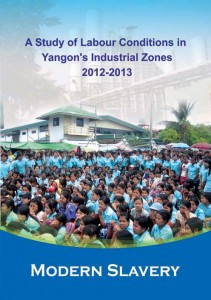 With Myanmar going through a period of transition and the space for civil society is expanding, the role of labour unions in promoting and protecting fundamental rights of workers is vital yet the challenges they face in the current environment are huge.
With Myanmar going through a period of transition and the space for civil society is expanding, the role of labour unions in promoting and protecting fundamental rights of workers is vital yet the challenges they face in the current environment are huge.
Workers in Yangon’s 13 industrial zones work in unsafe, hot, overcrowded factories, typically for around 11 hours per day […]
Endemic Land Confiscation in Burma: A Major Challenge to the Reform Process
The issue of land confiscation has been and will continue to be one of the largest problems facing Burma. The increase in foreign investment, the liberalization of the economy, and lack of rule of law generally, including both appropriate legislation and an independent judiciary,have resulted in land confiscation on an endemic scale. Thegovernment of Burma has responded […]
• • •Poverty, Displacement and Local Governance in South East Burma/Myanmar
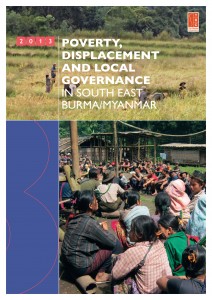 As the pace of reform has slowed in Burma/Myanmar during 2013, the potential for an inclusive political dialogue process to address the causes of conflict has increased. The sustainability of national reconciliation will require sensitivity to the concerns and aspirations of ethnic nationality communities in relation to identity, security and justice. This village-level survey describes the challenge of addressing chronic poverty, protracted displacement and weak governance at the community level in South East Myanmar as part of the conflict transformation process […]
As the pace of reform has slowed in Burma/Myanmar during 2013, the potential for an inclusive political dialogue process to address the causes of conflict has increased. The sustainability of national reconciliation will require sensitivity to the concerns and aspirations of ethnic nationality communities in relation to identity, security and justice. This village-level survey describes the challenge of addressing chronic poverty, protracted displacement and weak governance at the community level in South East Myanmar as part of the conflict transformation process […]
Undermining the Peace Process: Burmese Army Atrocities Against Civilians in Putao, Northern Kachin State
Despite ongoing peace negotiations with the Kachin Independence Organization (KIO), in early September 2013 Burmese government troops raided the village of Nhka Ga, near Putao in northern Kachin State, accusing the villagers of supporting the KIA. They detained and tortured ten villagers, shot three men to death, and raped the wife of one of the detainees. The troops have since been encamped in the village, restricting all civilian movement […]
• • •Economics of Peace and Conflict
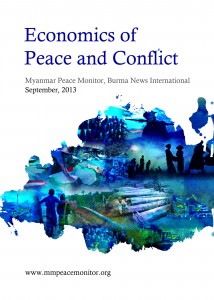 This report aims to clarify the complex processes of solving economic grievances related to the peace process. Examining how these efforts work and how the different actors, policies and projects make up a larger framework may help in assessing how well they respond to the roots of conflict. It especially tries to understand how the many different ministries, committees, international donors, CBOs, businesses (domestic and foreign) and NSAGs work together, overlap, or contradict each other in achieving economic and development goals for national peace […]
This report aims to clarify the complex processes of solving economic grievances related to the peace process. Examining how these efforts work and how the different actors, policies and projects make up a larger framework may help in assessing how well they respond to the roots of conflict. It especially tries to understand how the many different ministries, committees, international donors, CBOs, businesses (domestic and foreign) and NSAGs work together, overlap, or contradict each other in achieving economic and development goals for national peace […]
Invisible Enemies : Responding to the Landmine Threat in Burma/Myanmar
“Invisible Enemies” aims to inform different stakeholders — including the government, armed non-State actors, civil society, communities and villagers — about the short and long-term impact of landmines. At the same time, as everybody plays an important role in tackling the landmine problem, it also encourages all these stakeholders ‘to be part of the solution’ […]
• • •Burma’s Ethnic Challenge: From Aspirations to Solutions
Important steps have been made in national reconciliation during the past two years. But promises and ceremonies will never be enough. The long-standing aspirations of Burma’s peoples for peace and justice must find solutions during the present time of national transition […]
• • •








 All posts
All posts